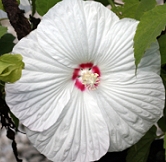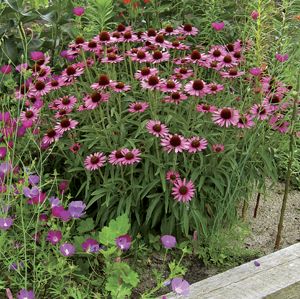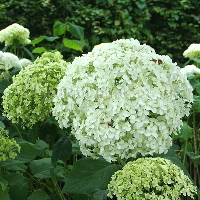Earlier this year I wrote about a highly recommended viburnum that I had planted as a specimen on a bank maybe six years ago and again two years ago to finish another round of landscaping in front of my house. By two years ago I had figured out that to get a good crop of berries you needed to add a different cultivar of the same species for pollination.
By last year I had found an unheralded member of the same species from the original plantings, which I planted, at either end of the row in front of my house. The experts were right; I got more berries.
The unheralded one-year-olds are bending to the ground with berries, while the recommended variety shows only a slight improvement in berry crop. I fear that I have just encountered surprise number 4307 in my efforts to learn about gardening.
The last three paragraphs hopefully suggest that some plants need a pollinator to successfully bear much fruit. The other two options in fruit or seed production are plants that self-pollinate and those that need specific male and female plants.
I think I am safe when I say that the vast majority of plants are self-fertile and can produce fruit (seed) when pollen (male part) is moved to the female parts of the flower on the same plant. This can be done by insects or even by the wind. Our common flowers have both the male and female parts in the same flower.
Insects can move pollen between different flowers on the same plant or for that matter between flowers of different plants. For that reason you may see differences between plants that just come up in your garden from reseeding. Commercially available seeds today are usually F1, or first-generation, hybrids and will produce very uniform plants.
Most conifers (evergreens) have separate male and female reproductive bodies and use wind to create the pollination. Since wind normally swirls up, the male flowers are usually at the bottom of the tree and the female flowers that produce the cones are closer to the top.
When we started, we were talking about plants that took two different members of the same species to produce the best crops of fruit. Multi-seeded fruits like apples and pears need this. So do some pitted fruit like sweet cherries and plums. Plums can be very specific about who pollinates whom. Peaches and nectarines are self-fertile.
In the shrubs, we have already identified viburnums as needing two different plants of the same species for good berry crops.
The other group, dioecious, meaning "two house", requires specific male and female plants to make seeded fruit. In this group, only the female will show fruit. Hollies are the most recognized members of this group. There are others. Fortunately, one male can be hardly noticed hidden in a group of females. Generally, real close proximity is not an issue.
Gardening is one continuous learning experience complete with surprises. 4307 was just a guess, but I am sure I will be claiming 5000 before long.








